Search Results
Fine Jewelry University Articles matching: “18kp 5mm rope chain 24 inch”
Showing only FJU Article results. Click here to show all results.
Fine Jewelry University (Show All FJU Articles)
-
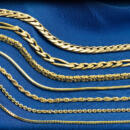
Types of Necklace Chains
The chain is one of the most fundamental pieces of jewelry that exists. It can simply be the thing you use to wear your …wear one everyday and not think twice about it, or it can be your most treasured piece of jewelry. But, what kind of chain is best for you? In this article we’ll introduce you to the staggering variety of necklace (and bracelet) chains … has its own unique style, strengths, and weaknesses. As always, if you would like personalized recommendations on a chain, feel free to contact us anytime. One of our experienced jewelry experts would love to talk with you. Cable Chain If…
-
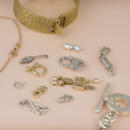
Types of Jewelry Clasps
…released, the spring tension closes the clasp again. PROS Strength – Lobster clasps are sturdy and ideal for heavier chains. Ease of Use – They are easier to use than some other styles (e.g. spring rings) because of their size and shape. …) Spring Rings are another very common style of clasp. They are used on virtually every variety of jewelry, and most chains under $100 come with a spring ring to help keep the cost of the overall chain down. If you have a chain that came …
-
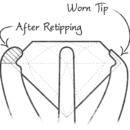
Jewelry Repair FAQ
…. Gold plating produces a layer of gold around 0.5 microns thick. A micron is roughly equal to 4/100,000 or 0.00004 inches. Gold plated jewelry is often indicated with a “GP” marking stamped somewhere on the piece. Heavy Gold … flashing (or washing) is thinner than standard gold plating. Gold flashing is only about 0.175 microns (or 0.000005 inches) thick. What is Rhodium Plating? Rhodium is a member of the Platinum family of metals, but it is actually whiter …
-
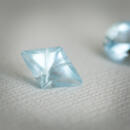
Gem in the Spotlight: Aquamarine
… fidelity in newlyweds. Notable Aquamarine Gemstones The largest gem-quality aquamarine gemstone ever mined was 19 inches long. The largest cut aquamarine is named the Dom Pedro and is an astounding 10,363 carats. It measures 14 inches … your aquamarine jewelry when doing household chores, going to the gem, or otherwise working with your hands. With proper care a piece of aquamarine jewelry can last generations being handed down and treasured for years to come. Why …
-
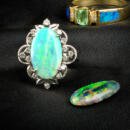
Gem in the Spotlight: Opal
… of hope and purity, associating it with positive virtues. Opal was even thought to possess protective and healing properties, guarding against disease and enhancing one’s eyesight. Pliny, a prominent Roman scholar in the first century AD… colors and its rarity. This opal is quite large, weighing approximately 180 carats (36 grams) and measuring 3 x 1.8 inches long. Its size and quality make it an exceptionally valuable gemstone. Care and Cleaning While opal’s enchanting …
-

How Are Lab Grown Diamonds Made?
…GE invention of the belt press uses an upper and lower anvil to generate pressure over 1.5 million pounds per square inch and temperature above 2,000 degrees Celsius. In this environment, the pure carbon melts and begins to form into a …made diamonds that are produced are not of gem quality. They are made for industrial applications where the amazing properties of diamonds (hardness, thermal conductivity, etc.) are used to make better tools and equipment. Since the …
-

What are “Blood Diamonds”?
… (NGOs) such as Global Witness and Partnership Africa Canada to create the Kimberley Process Certification System. This system was formally adopted in 2003 and guards against conflict diamonds entering the legitimate diamond supply chain. The diamond industry also adopted a voluntary System of Warranties to assure consumers that their diamonds are from sources free of conflict. Today, 71 governments have enshrined into their national law the Kimberley Process …
-
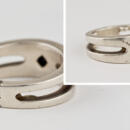
Jewelry Solder: What You Should Know
Solder is the unseen “glue” that holds most jewelry together. If you have ever had a ring sized, a chain repaired, or your wedding set joined together, you have very likely seen solder in action. But, what is solder and … metals like silver, copper, nickel, and so on. Each of these other metals contributes some of their unique properties of the final alloy changing its color, hardness, flexibility, and more. That’s great, but what does this have to do … their low melting point to the finished alloy, these solder specific alloys, also contribute some of their other properties to the finished product. solder specific alloys contribute some of their easy-tarnishing properties to the …